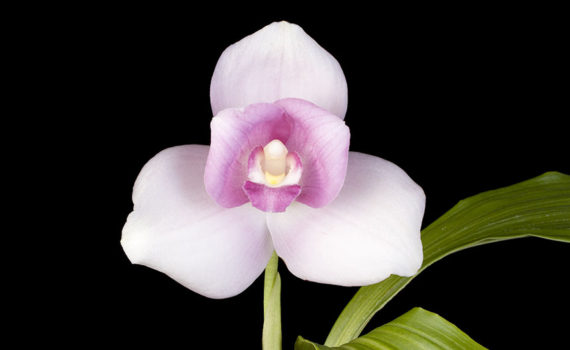At one time growing orchids was a hobby for the wealthy, requiring a greenhouse and attentive care. Today you can buy some orchids very inexpensively in your local stores. They are often sold with the other blooming plants you can enjoy and discard. But orchids are more than that – there are many, many kinds that can appeal to a wide variety of tastes. Some can be very easy to grow, almost weeds, and some will challenge the expert.

Phalaenopsis (fal-en-OP-siss) or Moth orchids come in white, pink, red, yellow, plain or with spots or stripes. The plants can be large or small, with a single stem or branching.
You can start by learning to grow the Phalaenopsis orchid then move on to include other varieties. You will find many other varieties will grow in your home environment. If you join a local orchid society, you will find a lot of like minded people who will be happy to share their experience and their plants. Attending an orchid show will astonish you with the variety of sizes, forms and colors of orchids. And you will find the many vendors of orchids you do not find in the local store.
There are some general rules about the culture of orchids. Most orchids in cultivation originated in the tropical areas of the world and generally grow on the branches or trunks of trees. The roots run along the bark in the moss that is also growing there and may hang down in the air. The roots are adapted to sponge up any rain or mist and can go for long periods of dryness. They collect any nutrients that happen by, maybe a gift from a bird. So this tells us that orchids need a lot of air around the roots – they will not grow in soil or mud, they dont like to be super wet, and they dont need much fertilizer.
Orchids generally need a potting mix that is open and airy. A variety of mixes are available or can be made up, usually based on chunks of bark or coconut husk. Orchids that are imported in pots are usually in sphagnum moss to ensure no pests are hitching a ride but sphagnum can be overwatered too easily. Because potting mixes slowly breakdown and turn to mush, an orchid should be repotted every two years in new mix.
At this point it is a good idea to learn the names of the kinds of orchids that are commonly available. If you wish to know about the culture requirements of a plant, it really helps to know what specific kind it is. Many times we are asked to give help with an orchid problem and when asked what kind of orchid it is, the answer is “I dont know”. That is like being asked to help with a pet problem when the owner doesnt know what kind of pet it is. Orchids usually have a “common name”, sometimes several. It is better to learn the scientific names, which are unique.
Related Topics
Orchid culture notes for beginners
A set of notes prepared for the Southern Ontario Orchid Society by Wayne Hingston



